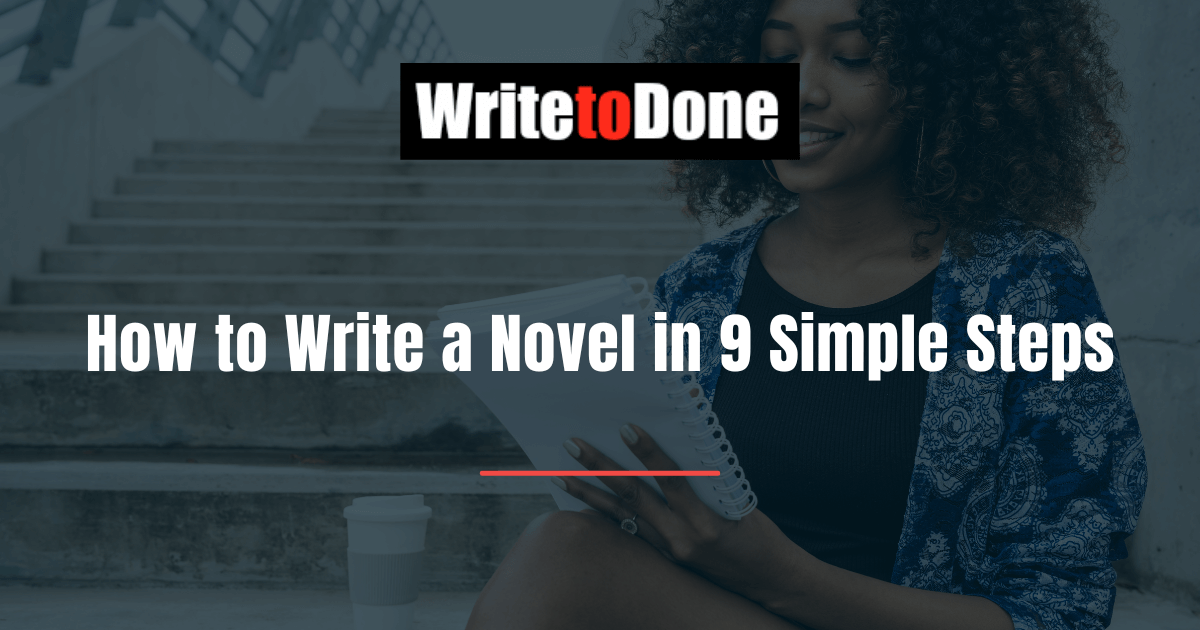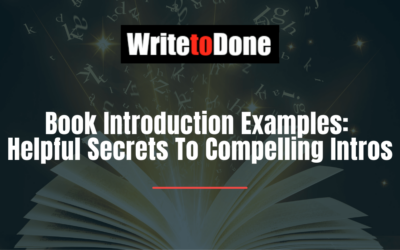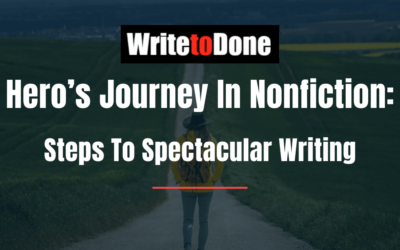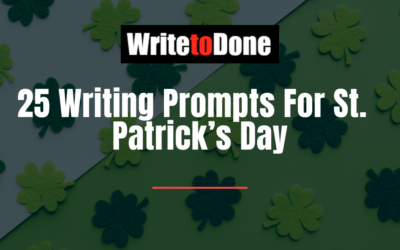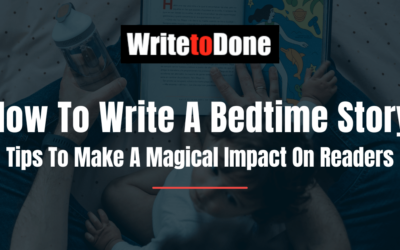If you’re ready to learn how to write a novel, congratulations!
You’re about to embark upon the major bucket list item for most writers – a full-length novel.
A project of this scale can be equally exciting and intimidating.
On the one hand, you have an entirely clean slate. You are free to create the characters, story, and even world that you want. You have complete creative freedom with no one to stand in your way or restrict you.
On the other, it’s a lot of work! Even writing a full first draft is a massive endeavor and that’s aside from edits, revisions, and everything else needed to get your book ready to publish.
However, just because it’s difficult, you shouldn’t give up!
We’ve broken down the nine steps needed to write a novel successfully so you can seize upon your initial excitement and get creating.
To write a novel, follow these simple steps:
- Choose your main story idea
- Commit to a regular reading habit
- Determine the setting for your novel
- Bring your main characters to life
- Select motivation and conflict
- Outline your novel’s plot
- Choose your novel writing software
- Set writing targets and deadlines
- Revise, self-edit, and edit your novel
Before we fully explore the nine steps needed to write a novel, let’s clear up the answers to some of the most common questions about novel writing.
What is a novel?
A novel is a work of fiction that is of a certain length usually focusing on character and story. It is longer than a short story or novella.
If you’re not sure whether your fiction book project is best described as a novella or novel, we’ve broken down the word counts for each type in the section below.
How many words are in a novel?
A novel is typically considered to have at least 40,000 words, although fictional books of 50,000 words or more are more usually considered novels.
The different word counts for fiction are as follows:
- Flash fiction. Under 500 words.
- Short story. Between 1000 and 10,000 words.
- Novelette. Between 7,5000 and 17,000 words.
- Novella. Between 10,000 and 40,000 words.
- Novel. 40,000 words or over.
If your fiction book is over 40,000 words in length, you can safely consider it to be a novel.
How do you plan a novel?
Just as there is no one way of writing a novel, there is no single way to plan one either.
Some novelists like to plan rigidly, having a solid idea of exactly what is going to happen at any given point in their story. This level of planning can get very granular, even occurring on a scene by scene level.
Other writers prefer to plan minimally, if at all. Some don’t plan whatsoever, preferring to see where their creativity ends up taking them as they write.
The middle ground option is to sketch out the story’s major plot points and milestones but leave flexibility as to how they are reached.
Depending upon the approach you take to plotting your novel, you might decide to label yourself as a plotter or a pantser.
What is a plotter VS a pantser?
A plotter is a novelist who takes the time to plan and the twists and turns of their story in advance of writing. They like to map out in great detail the plot points that will occur, the story arcs that will take place, and how the characters progress along their journey.
A pantser, on the other hand, is someone who prefers to write without plotting. The phrase comes from ‘writing by the seat of your pants’ as opposed to planning out in advance.
Famous novelists exist in both camps, but for most starter writers, it is generally suggested to explore plotting for a first project.
Choose your main story idea
Before you sit down to begin your novel, you should have an idea of the story and the main idea behind it.
But what does a main story idea look like?
Your main story idea may be more or less crystallized before you begin the writing process, and that’s OK. Some authors might have a key character strongly in mind but not much of an idea of what their story will look like. Other authors will have an interesting concept or scenario for a story but without an understanding of what the characters will look like.
Stephen King, in On Writing, described this main idea as a little like excavating fossils. You’ll see a rough shape of the fossil at the start. This is your main story idea. Your job as a novelist is then to brush away the dirt and allow your story to take shape and become clear as you write.
Whether you end up going for a key character, a major plot concept, or even a setting, make sure you have the ‘shape of a fossil’ to work with before going any further in your novel writing process.
Commit to a regular reading habit
One of the major keys to being a successful novelist is to be a true lover of the genre you want to write in.
You should have a true passion and understanding of the style of novel you want to write. Only by first becoming a true fan and admirer of the genre will you have the level of understanding and creativity needed to write skillfully within it.
Hopefully, you’ve been a regular reader for years, but what if you want to write in a new style or genre? It’s not too late, don’t worry!
Try these steps to commit to a reading habit in a new genre before attempting a novel in that same style:
- Make a list of five undisputed classics in that genre
- Make a list of five contemporary voices within the genre you find exciting or interesting
- Using your average reading pace, make a plan to read at least five of the books from both lists, with at least two from each
- Commit to this initial plan before sitting down to write your novel
- Read the other books as part of your regular reading habit even as you write your novel
Without being an avid reader of a particular genre, you will not be able to successfully write novels in that genre. Ignore this step at your own peril!
Determine the setting for your novel
One of the most exciting aspects of writing a new novel is coming up with its setting.
Depending on the genre you are writing in, and the time in which your story is set, you have an amazing amount of freedom here!
But where exactly should you set your novel? Are there things you should know to avoid making a mistake in this crucial area?
Keep these tips in mind before determining the setting for your novel:
- Expectation. Do you have any reader expectations you need to be aware of? For example, readers of science-fiction will have different expectations of setting than fantasy fans.
- Realism. Are you writing in the real world? If so, you need to make sure you get your facts straight. A mistake about a real-world setting will quickly break your reader’s suspension of disbelief and shatter the spell you worked so hard to create.
- History. If you’re writing in a past time period, check and double-check your setting. Research as much as you need to avoid getting something wrong.
- Inspiration. How will you draw on inspiration when writing about your setting? If it’s based around places you live or have lived, it’s easy to come up with detail. However, if it’s somewhere you’re unfamiliar with, make sure you can access reliable information about that place. Google street view and historical photographic archives can be fantastic resources here.
Depending on the ambition of your novel, your story might have one main setting or be set across multiple locations.
Make detailed notes about all of the settings you plan to use in your novel. This will add a level of detail that would otherwise be lacking but it can also help you avoid any internal contradictions relating to setting.
Bring your main characters to life
Even the best novel falls flat with subpar characters.
Put yourself in your future reader’s shoes. They are going to spend a lot of time with your characters, especially your main characters. They should care about them and feel they are as rich and engaging as possible.
When working on your initial character ideas, there are two major focuses you need to keep in mind:
- Internal. What does your character think and feel? What are the values that drive them? What do they hope and fear about the world and the life they live? Coming up with a rich internal world for your characters will give them depth and help them be engaging for readers.
- External. What does your character look like on the outside? This covers their basic physical traits like height and weight but also their style and how they carry themselves.
A lot of writers advocate for giving your characters minimal levels of physical description and letting the reader’s mind’s eye do the rest of the work.
Your job as a novelist is to come up with the rich internal world of your characters, which brings us on to the next step,
Select motivation and conflict
All effective stories are based around the ideas of motivation and conflict.
In essence, most stories center around one or more people who desire something, and the story examines their efforts to get it and the things that thwart them along the way.
Your main focus should be on the motivations of your main character. What do they want, and why do they want it? What is standing in their way and stopping them from gaining what they want to achieve?
Often, a character’s main motivation is something tangible, such as to gain someone’s hand in marriage or to discover priceless treasure. Other times, characters want something less tangible, like respect from their parents or recognition from the society that shunned them.
As well as thinking of motivation, think about conflict and consequence. Which forces conflict with your main character’s motivation? A love rival would be an obvious example of this.
Also, what happens if your character doesn’t get what they are setting out to achieve? There have to be consequences, and your reader needs to care about these consequences. Without motivation, conflict, and consequence, your novel will lack all of the tension that makes it a worthwhile read.
Outline your novel’s plot
We looked earlier at some of the different approaches to plotting and pantsing that are out there. Hopefully, at this point in the process, you know which you want to pursue.
No matter how you do it, it’s time to come up with the level of outline for your novel that you have deemed appropriate.
This could be anything from a brief sketching out of the classic three-act structure, or it could be a full scene by scene breakdown where almost everything but the finest detail is determined in advance.
Some novelists like to have a digital version of their plot outline. Some specialist writing software makes this easy. Others like to go old-school and have a big erasable board or even a paper outline.
If you’ve decided to use an outline to any extent whatsoever, have it clearly expressed in writing before you begin your novel. It will help greatly in determining your targets and deadlines as well as in ensuring your story stays on track.
Choose your novel writing software
Before you get into the writing process itself, take the time to come up with the software you will use to write your novel, and make sure it is all installed and ready to go beforehand.
Everyone’s preferences are different, but you should consider the environment you want to write in, and whether it has all the features you need to help you write your novel as efficiently and effectively as possible.
For example, you might want a specialist novel writing app that has room for research and plotting within the software environment. Don’t just assume that the default writing tool that comes with your laptop is the best choice – it almost certainly wasn’t designed with novelists in mind.
As well as your writing software, you should think about self-editing tools. Which will you use? Is it compatible with your other hardware and software? Will you have to invest any time and money into purchasing software? If so, are you prepared to do that?
Don’t spend too long choosing software. Most will get the job done. Instead, get hands-on with your intended app and then make your final choice. Software is nothing but a means to an end to help get your novel written in the most pain-free way possible.
How to Write A Novel: Setting Targets and Dates
You now have everything in place that you need to get going and make serious progress on your novel’s word count.
However, simply telling yourself you’re going to write isn’t enough. It’s important to have targets and deadlines so that you can measure your progress and make sure things are going as intended.
You can set yourself targets either by time or by output.
If you go for time, you make a deal with yourself that you will sit down and right in a deep and focused way for a set period of time. For example, you might commit to sitting at your desk and working only on your novel for a period of no less than three hours each day,
The other option is to set a target based on output. For example, you will write 1000 words each day, and you’re not allowed to stop until you get them done.
Both approaches have worked well, so if you’re just starting as a novelist, try a week of each and see which you find to be more motivational and enjoyable.
Having a deadline is important. If you take too long over a draft of a novel, it starts to lose its freshness and urgency.
Revise, self-edit, and edit your novel
At this stage in the process, you’ve completed the first draft of your novel. Congratulations! That’s a huge achievement and something you should feel great about. However, your novel project is far from complete at this point.
It’s important to initially self-edit your work using a tool like Grammarly or ProWritingAid. Doing this will catch your most glaring errors and ensure your human editor’s time is better spent.
Finally, invest in the best level of editing you can afford if you are choosing the self-publishing path. It will result in a much better experience for your reader and help get your career as a novelist off on the right track.

